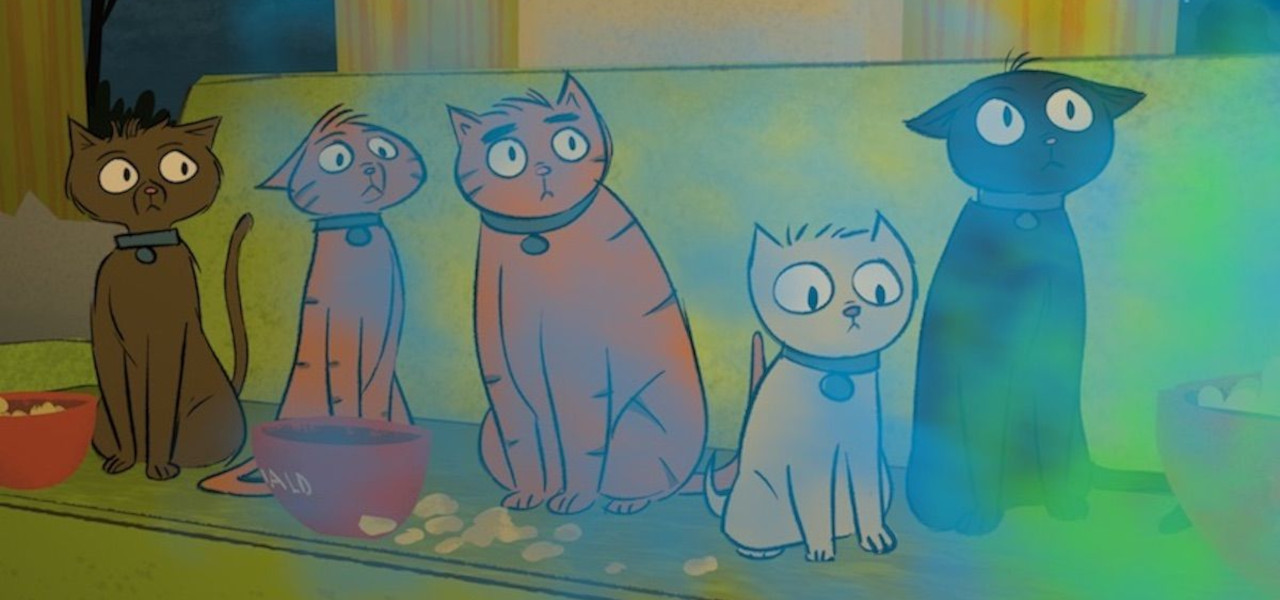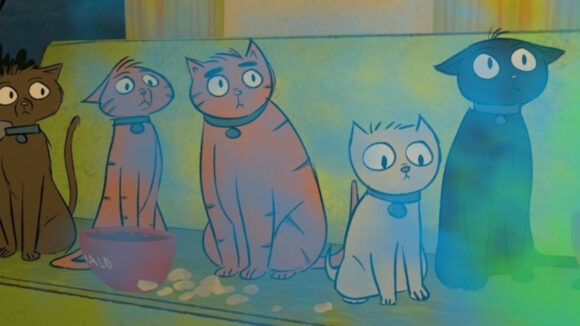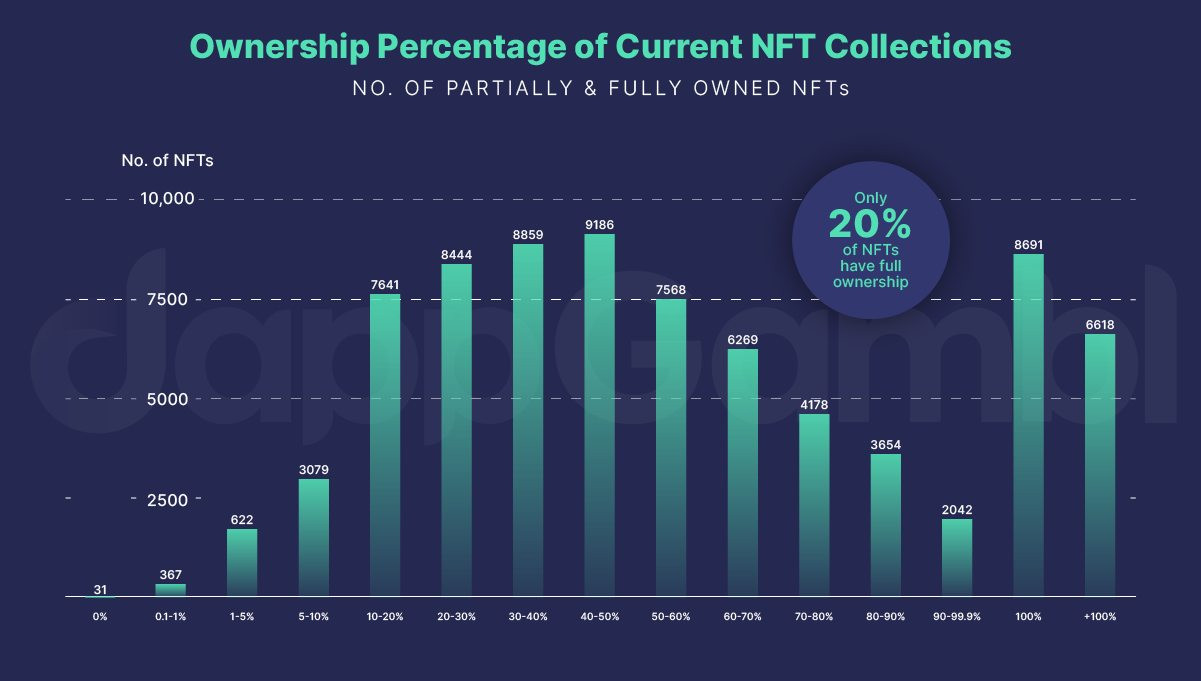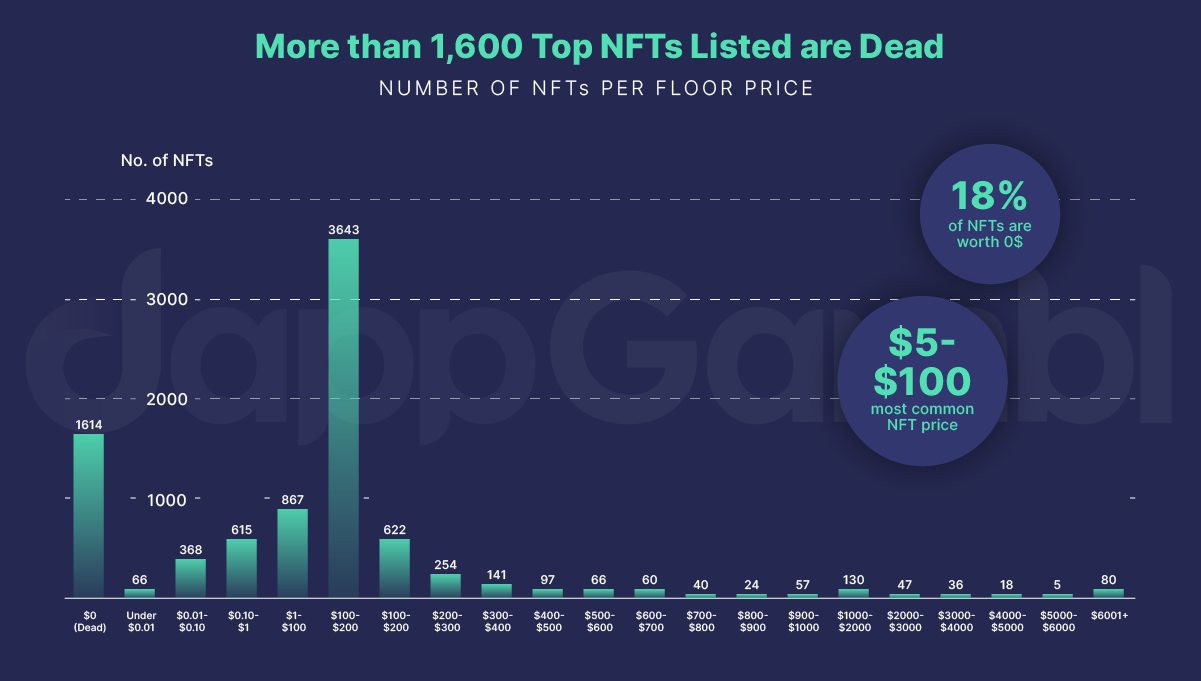

95% Of NFTs Are Worthless, And The Ones That Aren’t Have Plummeted In Value
There have been any number of stories recently that have cast a negative light on the world of NFTs. Now, a study from blockchain analysts Dappgambl has painted an even uglier picture of the larger state of the once-hyped digital commodities and says that as many as 95% of the tokens are entirely worthless.
Titled “Dead NFTs: The Evolving Landscape of the NFT Market,” the article was put together by Vlad Hategan, who specializes in crypto and blockchain, the latter being the foundation on which NFT technology was built. Below, we’ve summarized the full report, which can be found here.
Current State of the NFT Market
According to the data presented in the piece, NFTs had a weekly traded value of around $80 million in July 2023, just 3% of the market’s peak in August 2021. It also showed that the “vast majority of NFTs are worthless.” Researchers looked at 73,257 NFT collections that once had a collective trading volume of around $17 billion and found that 69,795 of them, about 95%, now have zero market value.
Supply But No Demand
For the majority of the collections monitored by the study, NFT supply vastly outpaced demand. Only 20% of the collections examined for the study had full ownership, meaning the other 79% had unsold assets. The study argues that the surplus created by oversupplying has created a buyer’s market, where a smaller pool of would-be investors are being more careful than ever when evaluating potential purchases. “As a result, projects that lack clear use cases, compelling narratives, or genuine artistic value are finding it increasingly difficult to attract attention and sales,” Hategan explained.

Lonely at the Top
Narrowing the focus of the study, Dappgambl also looked at only the most popular NFT collections and still struggled to find value in the tokens. Of the popular collections monitored by the group, 18% had a value of zero dollars, and the average price of an individual token was between $5-$100. Less than 1% were listed at $6,000 or more. The study was also careful to point out that those higher prices could be set “without any bearing on tangible, real demand.” What the NFTs are actually worth could be far less than what holders are listing them for.

Negative Environmental Impact
On the NFT marketplace, a worthless NFT is just that, worthless. In the real world, an NFT with no value actually has a detrimental effect on our shared environment. The creation, minting, and marketing of NFTs all consume energy. The study found 195,699 NFT collections with no apparent owners or market share. According to their research, the energy required just to mint those tokens is comparable to 27,789,258 kWh, producing approximately 16,243 metric tons of CO2. According to the EPA, that’s equal to the yearly emissions of 2,048 homes, 3531 cars, or 4061 passengers flying from London, England to Wellington, New Zealand.
Lesson Learned
Hategan concluded, “This daunting reality should serve as a sobering check on the euphoria that has often surrounded the NFT space. Amid stories of digital art pieces selling for millions and overnight success stories, it is easy to overlook the fact that the market is fraught with pitfalls and potential losses.” He advised that anyone looking to play the NFT game should focus only on tokens that have a utilitarian use, like video game assets; token-gated access to events, content, or services; or digital ID verification.
Pictured at top: Stoner Cats, an NFT-funded animate series which was just fined $1 million by the FTC for misleading investors.

.png)



